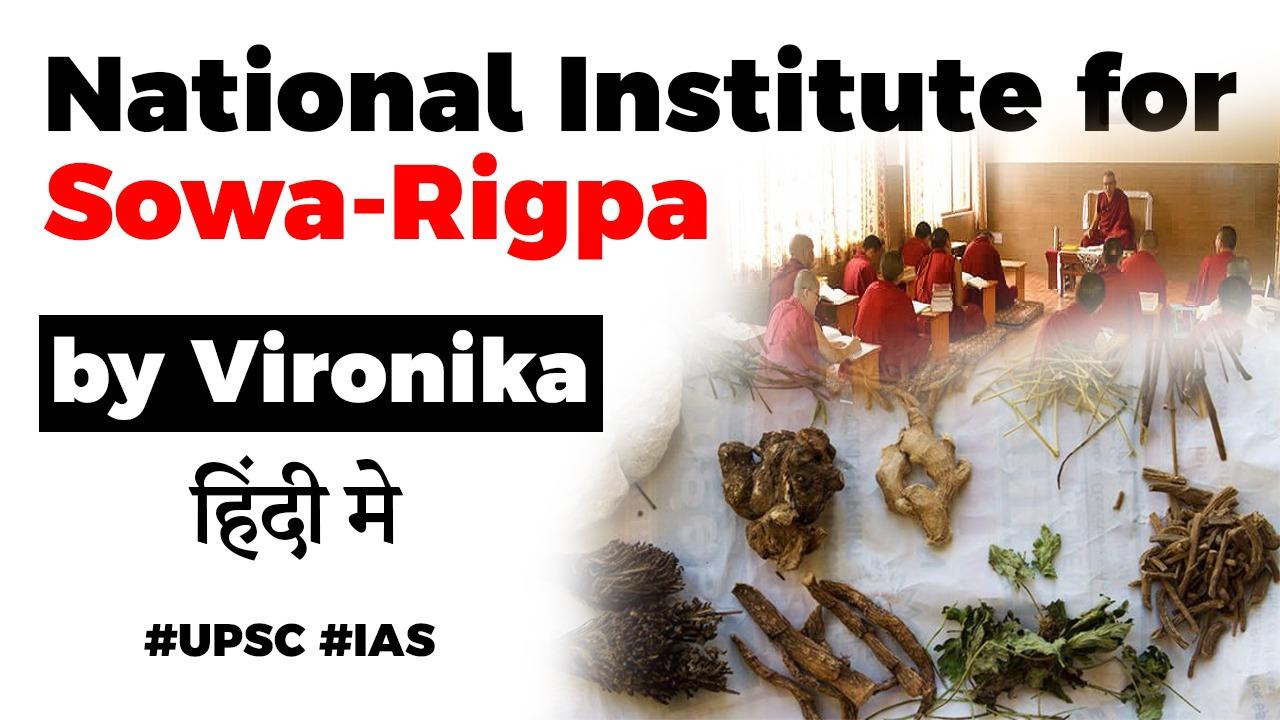Table of Contents
Context
- The Union Cabinet has approved the establishment of the National Institute for Sowa-Rigpa in Leh.
SowaRigpa
- The Tibetan Medicine system is known as Sowa Rigpa (Amchi)
- Sowa Rigpa has been recognized by Government of India by amending the Indian Medicine Central Council (IMCC) Act, 2010
- This system is practiced in – Jammu & Kashmir, Sikkim, West Bengal, Arunachal Pradesh, Himachal Pradesh
- The majority of theory and practice of Sowa-Rigpa is similar to “Ayurveda” .
- The first Ayurvedic influence came to Tibet during 3rd century AD but it became popular only after 7th centuries with the approach of Buddhism to Tibet.
- rGyud-bZhi (four tantra) the fundamental text book of this medicine was composed by Yuthog Yonten Gonpo who is believed to be the father of Sowa Rigpa.
- The setting up of the National Institute of Sowa-Rigpa would provide an impetus for the revival of Sowa-Rigpa in the Indian Sub-continent.
- The Institute will also provide opportunities for students of Sowa-Rigpa not only in India but also from other countries.
- Yuthog Yonten Gonpo from Tibet is believed to be the father of Sowa Rigpa.
Origin
- “Sowa-Rigpa” commonly known as Amchi system of medicine is one of the oldest, Living and well documented medical tradition of the world. It has been popularly practice in Tibet, Magnolia, Bhutan, some parts of China, Nepal, Himalayan regions of India and few parts of former Soviet Union etc.
- Oldest, Living and well documented medical tradition of the world
- Sowa-Rigpa” (Science of healing) is one of the classic examples of it. Gyud-Zi (four tantra) the fundamental text book of this medicine was first translated from India and enriched in Tibet with its own folklore and other medical tradition like Chinese and Persian etc.
- The impact of Sowa-Rigpa along with Buddhism and other Tibetan art and sciences were spread in neighboring Himalayan regions. In India this system has been practiced in Sikkim, Arunachal Pradesh, Darjeeling (West Bangal), Lahoul & Spiti (Himanchal Pradesh) and Ladakh region of Jammu& Kashmir etc.

Theory and Practice
- The basic theory of Sowa-Rigpa may be adumbrated in terms of the following five points:
- The body in disease as the locus of treatment;
- Antidote, i.e., the treatment;
- The method of treatment through antidote;
- Medicine that cures the disease;
- Materia Medica, Pharmacy & Pharmacology
Training
- Traditionally the Amchis are trained under the traditional educational system either under private guru-shisya tradition or under gyud-pa (lineage) system in families in which the knowledge is passed down from father to son through generations.
- Central Institute of Buddhist Studies, Leh (under Ministry of Culture, Govt. of India)
- Tibetan Medical and Astrological Institute, Dharamsala HP of his Holiness Dalai Lama
- Central University for Tibetan Studies, Saranath UP (under Ministry of Culture, Govt. of India)
- Chockpori Medical Institute Darjeeling (W.B).
Infrastructures
- There is Central Council for Tibetan Medicine in Dharamsala to regulate the practice of Sowa-Rigpa in India, it looks after the registration of practitioners, standard of colleges and other mechanism to regulate Sowa-Rigpa.
- Ladakh
- Himachal Pardesh
- Arunachal Pradesh
- Sikkim, Darjeeling and Kalimplong
- Other regions of India
Traditional Tibetan medicine
- Four Tantras
- Root Tantra
- Exegetical Tantra
- Instructional Tantra
- Subsequent Tantra Three principles
- rLung
- mKhris-pa
- Bad-kan
Latest Burning Issues | Free PDF






















 WhatsApp
WhatsApp